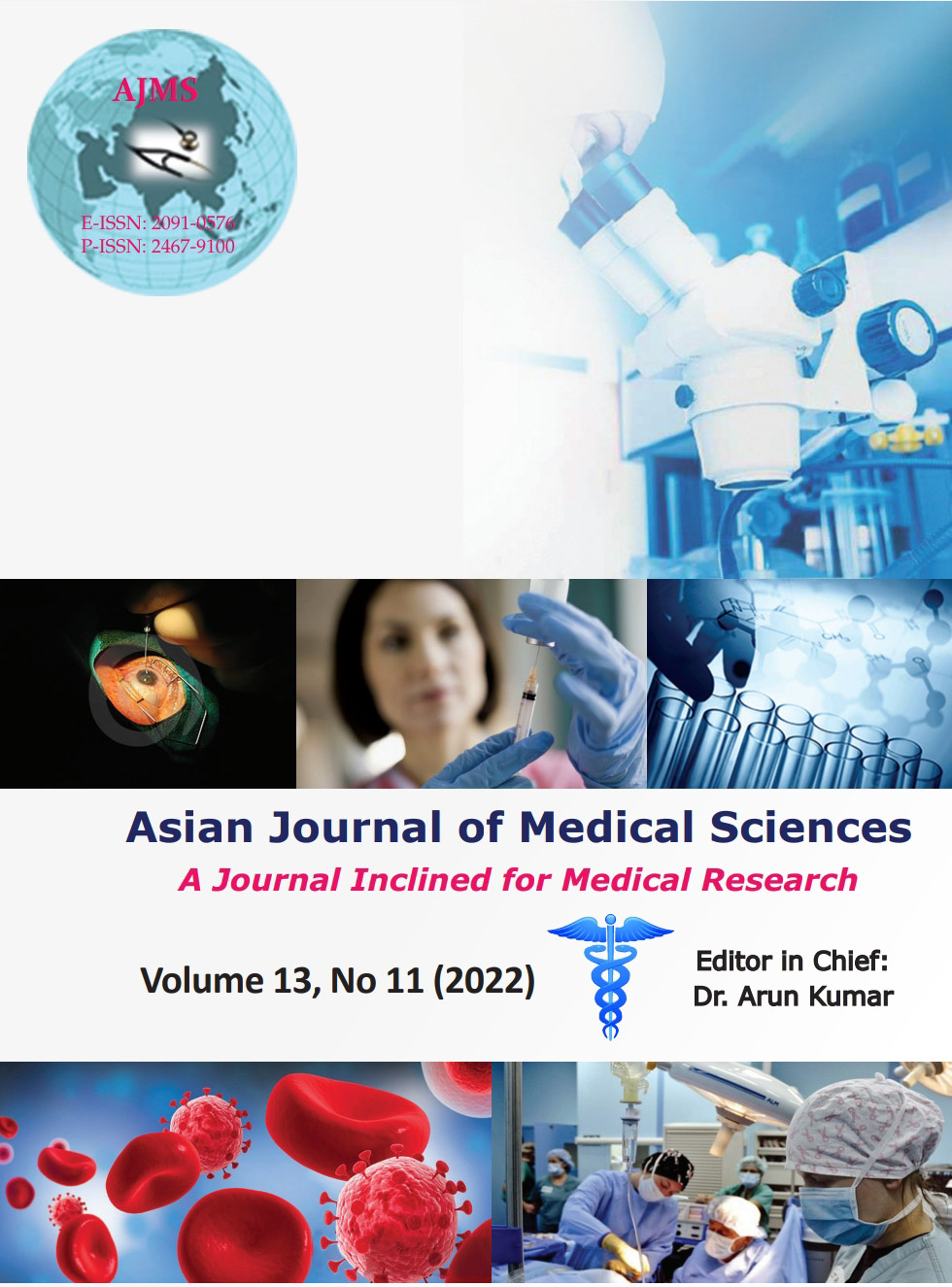Study of fetomaternal outcomes in eclampsia in correlation to coagulation profile in a tertiary care center in Mumbai
Keywords:
Pre-eclampsia; Eclampsia; Coagulation profileAbstract
Background: Eclampsia is the leading cause of maternal and perinatal mortality as well as morbidity. The present study was conducted to assess the severity of eclampsia and coagulopathy by a method that is rapid, cheaper, and easily available and to assess the clinical evaluation and comparison of the fetomaternal outcomes in eclampsia with normal and deranged coagulation profiles.
Aims and Objectives: This study aims to assess the severity of eclampsia and coagulopathy by a method that is rapid, cheaper, and easily available and to assess the clinical evaluation and comparison of the fetomaternal outcomes in eclampsia with normal and deranged coagulation profiles.
Materials and Methods: A hospital-based prospective case–control study was done at tertiary care institute in the department of obstetrics and gynecology over a period of 1½ years from February 2018 to August 2019. Template was generated in MS Excel sheet and analysis was done on SPSS software.
Results: Overall incidence of eclampsia was found to be 2.4%. Majority of the eclampsia patients in both normal coagulation profile group and deranged coagulation profile group were in the age group of 21–25 years (42.8% and 46.6%, respectively). The most common maternal outcome in the eclampsia patients with both normal (50%) and deranged (36.6%) coagulation profile was operative intervention, that is, lower segment cesarean section, followed by the requirement of maternal intensive care in critical care unit or medical intensive care unit. The least common fetal outcome among those with normal coagulation profile being neonatal death and still birth accounting for 2.85% of cases each whereas among those with deranged coagulation profile, the least common outcome being very low birth weight accounting for 3.33% of cases. Of the 46 eclampsia mothers who underwent operative intervention, 93.47% had normal platelet counts and 6.52% had thrombocytopenia. Of the eight neonatal deaths, 50% were among those of eclampsia mothers with normal platelet count and 50% among those with thrombocytopenia.
Conclusion: In the present study, eclampsia accounted for 2.3% of all deliveries. Hence, relevant investigations need to be promptly done to identify the derangement of the coagulation profile in cases of eclampsia and pre-eclampsia which can alert the obstetrician of the severity of the disease so that appropriate and timely management can be initiated to prevent adverse outcomes.
Downloads
Downloads
Published
How to Cite
Issue
Section
License
Copyright (c) 2022 Asian Journal of Medical Sciences

This work is licensed under a Creative Commons Attribution-NonCommercial 4.0 International License.
Authors who publish with this journal agree to the following terms:
- The journal holds copyright and publishes the work under a Creative Commons CC-BY-NC license that permits use, distribution and reprduction in any medium, provided the original work is properly cited and is not used for commercial purposes. The journal should be recognised as the original publisher of this work.
- Authors are able to enter into separate, additional contractual arrangements for the non-exclusive distribution of the journal's published version of the work (e.g., post it to an institutional repository or publish it in a book), with an acknowledgement of its initial publication in this journal.
- Authors are permitted and encouraged to post their work online (e.g., in institutional repositories or on their website) prior to and during the submission process, as it can lead to productive exchanges, as well as earlier and greater citation of published work (See The Effect of Open Access).




